The document discusses indirect object clitic doubling constructions in Spanish and other languages. It proposes that these constructions involve an applicative head (Appl) that licenses the indirect object in its specifier position. This relationship between the indirect object and Appl allows Appl to form the basis for the clitic. The presence of Appl gives these constructions properties of both prepositional dative constructions and double object constructions, such as binding asymmetries and scope freezing effects.
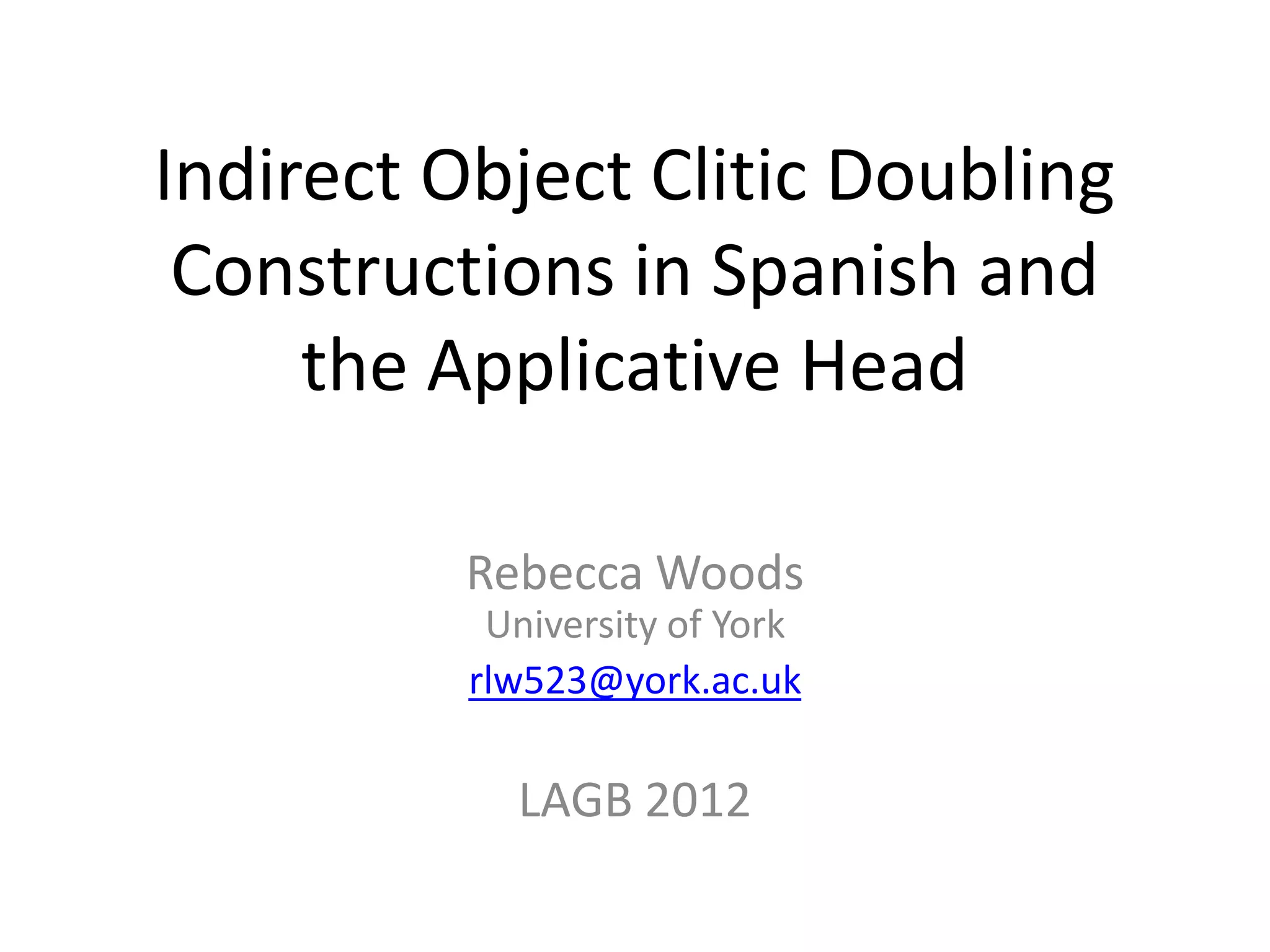
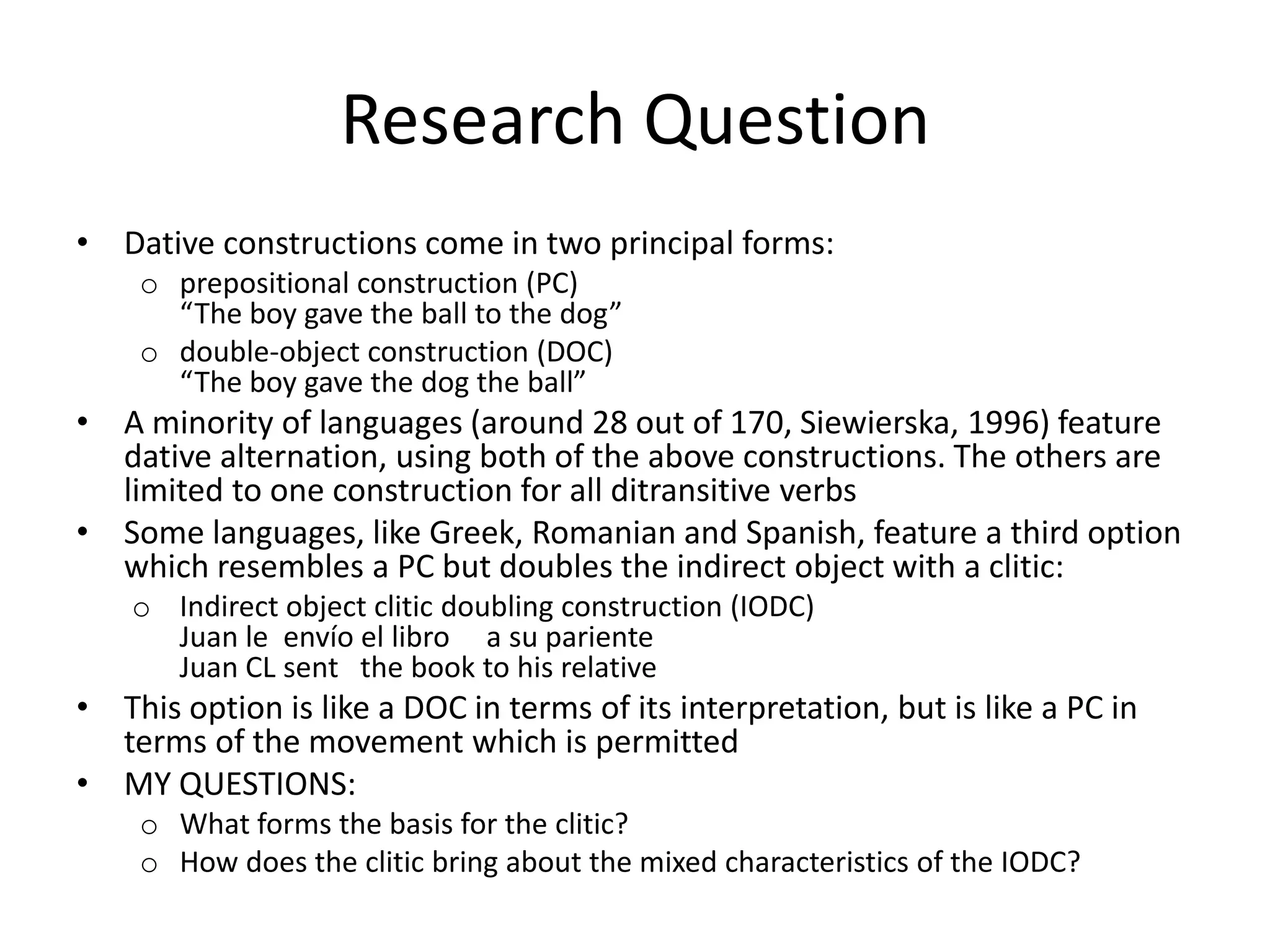
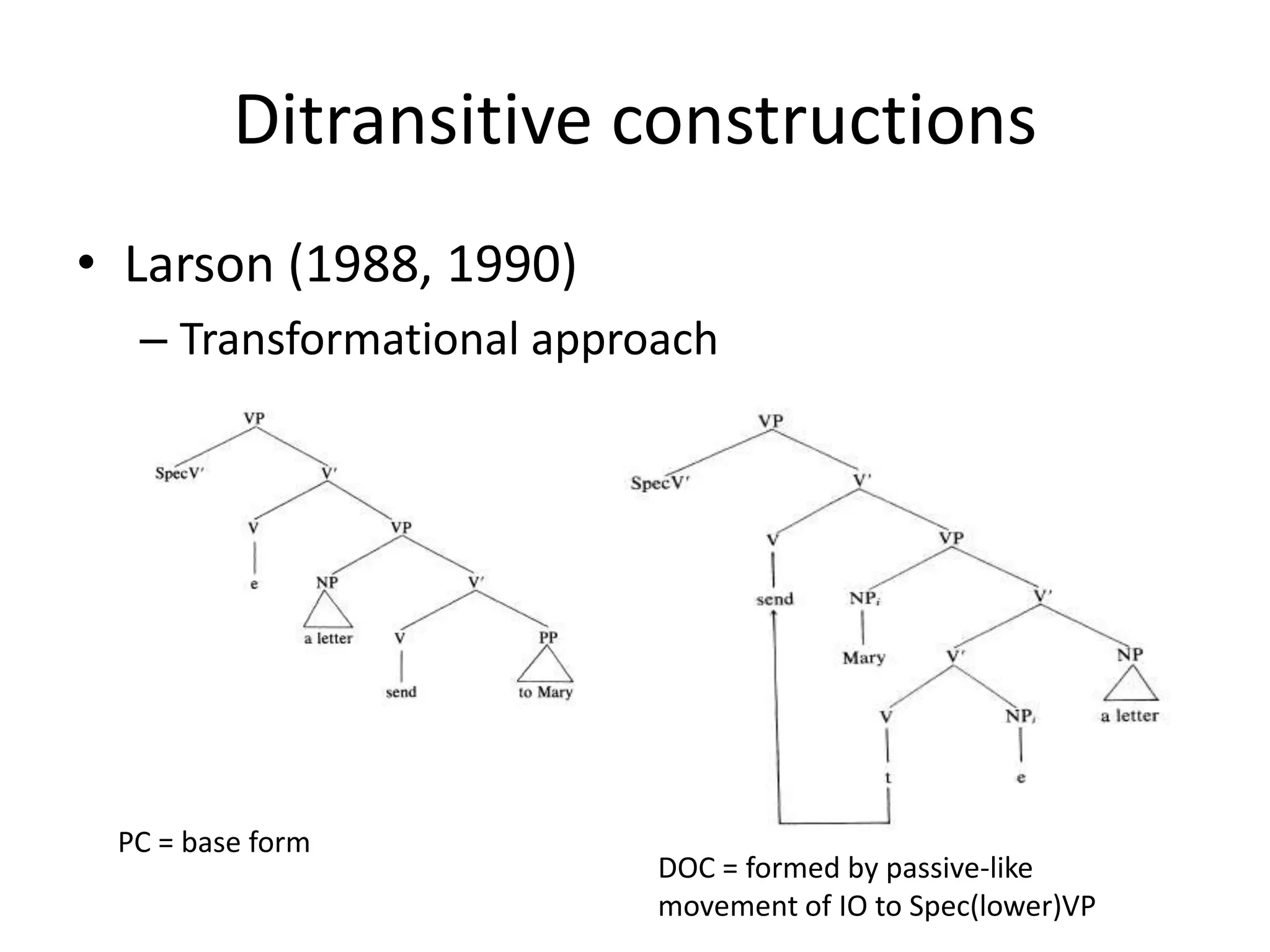
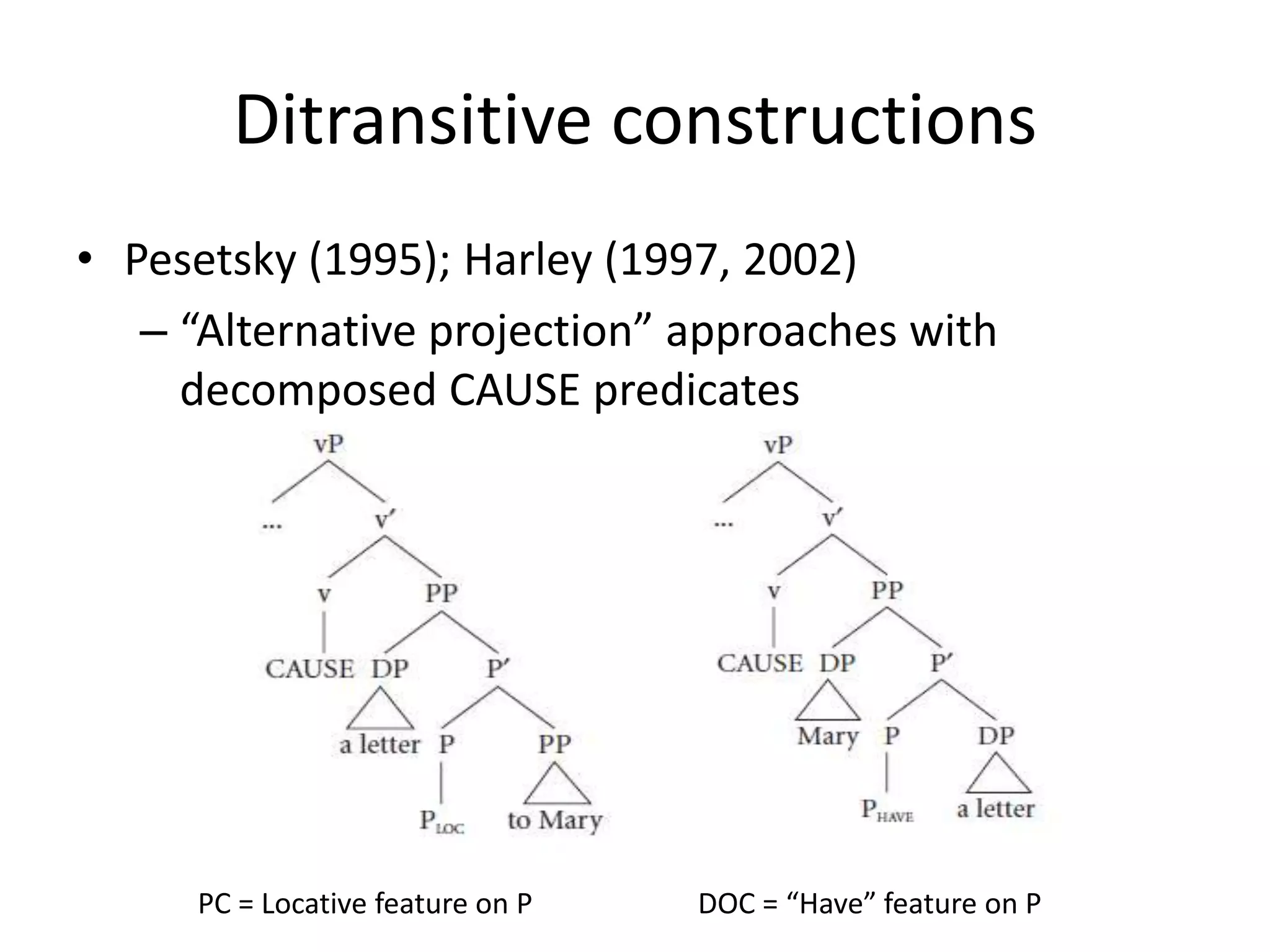
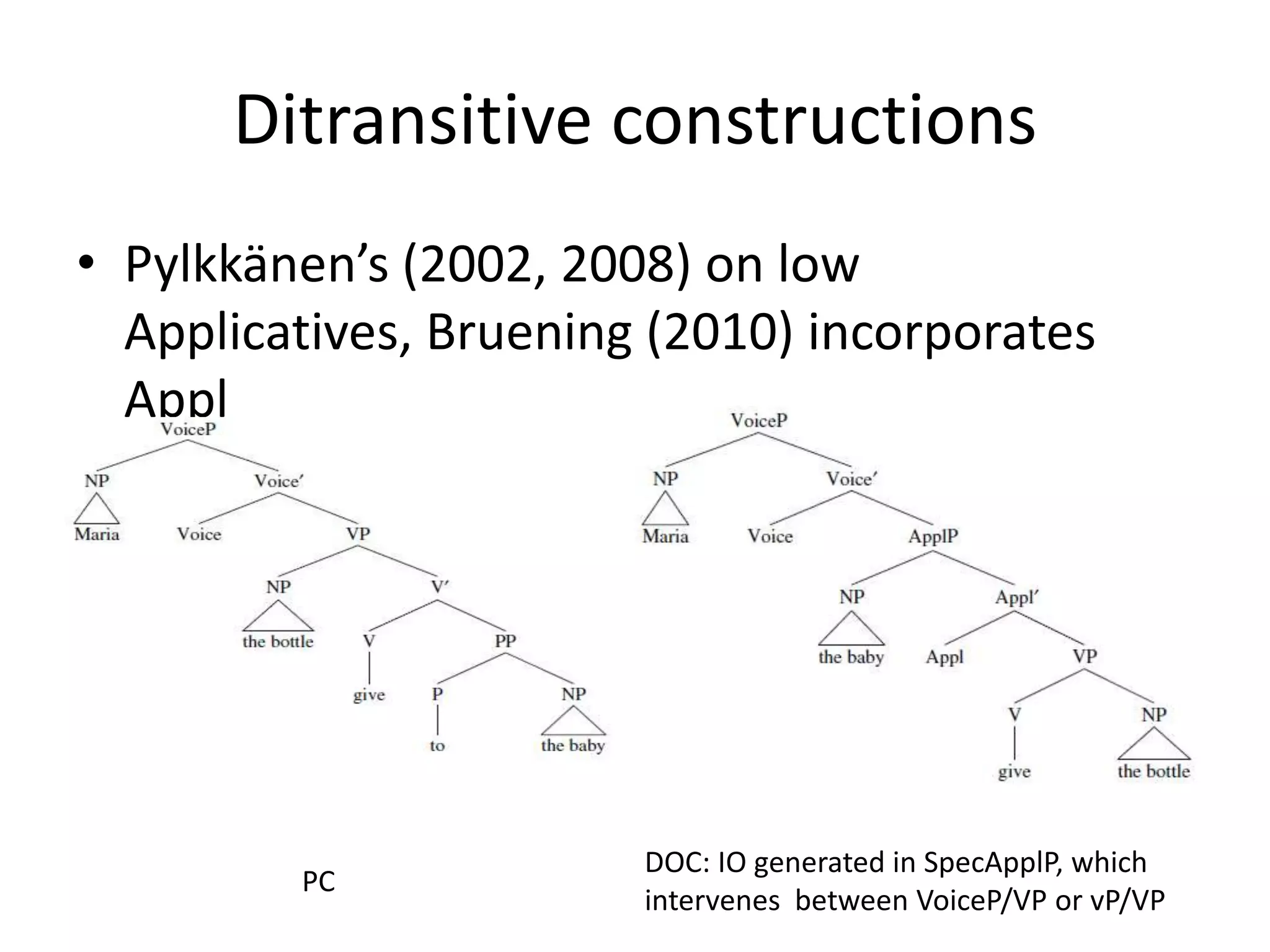
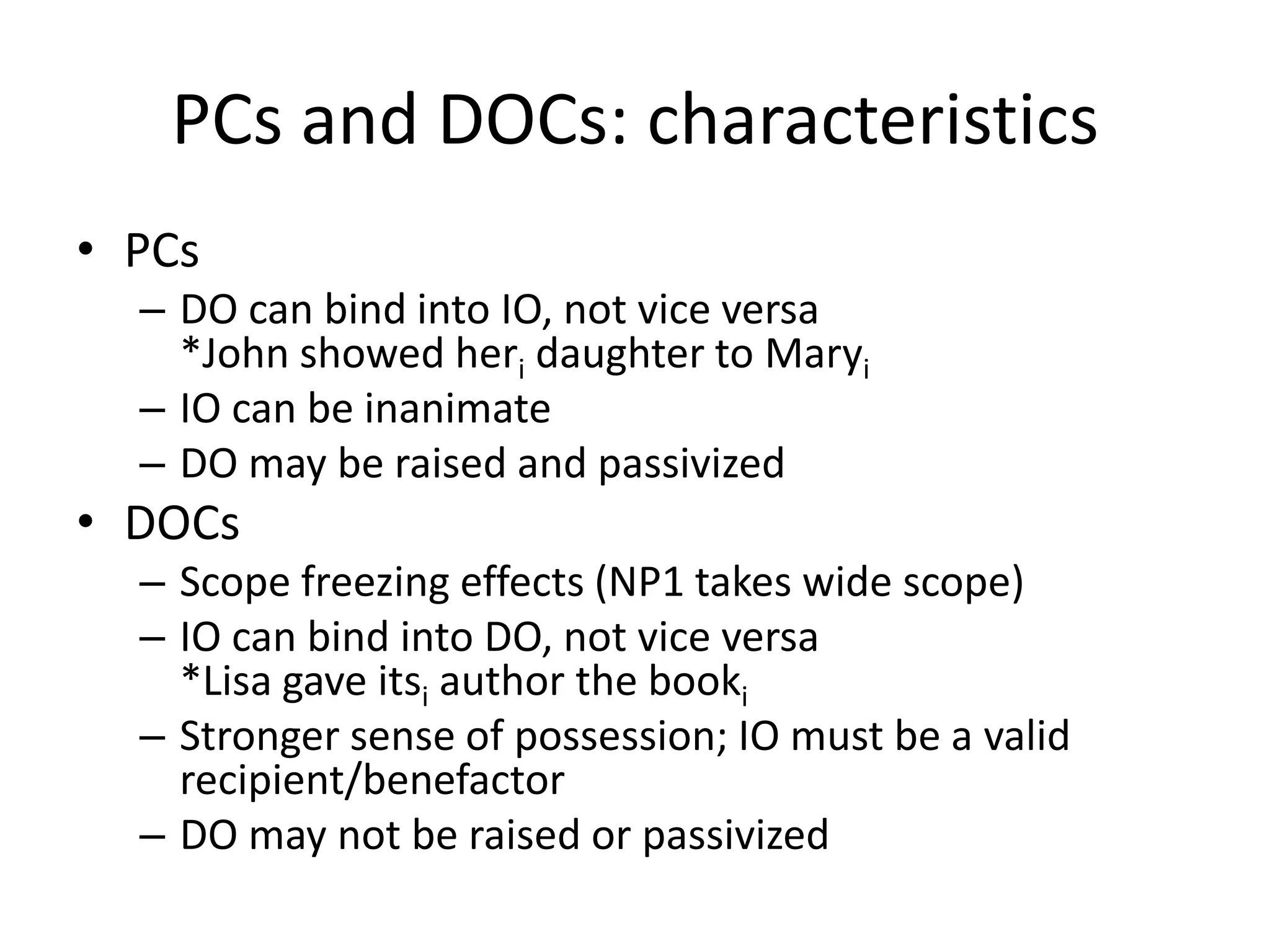

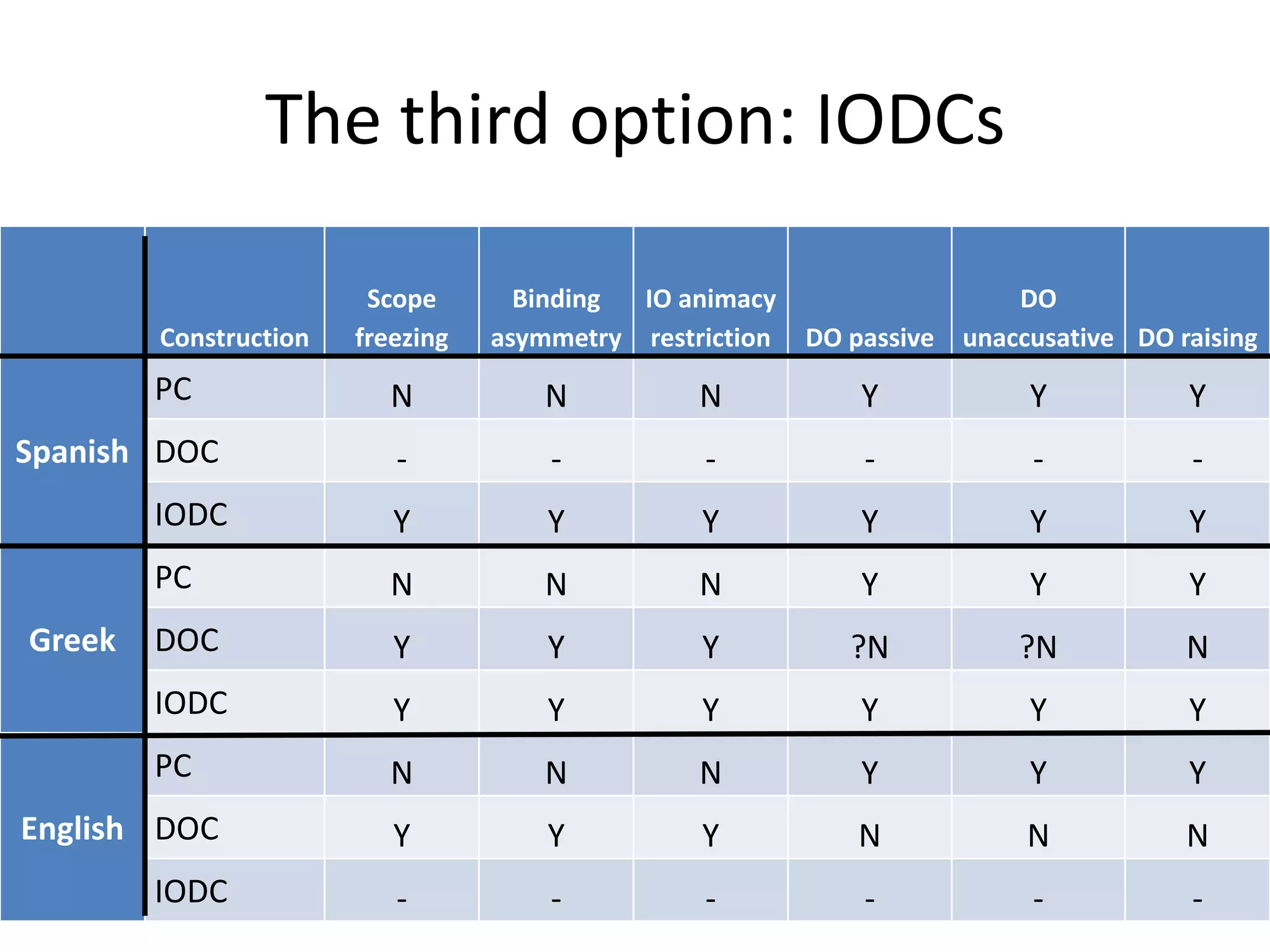
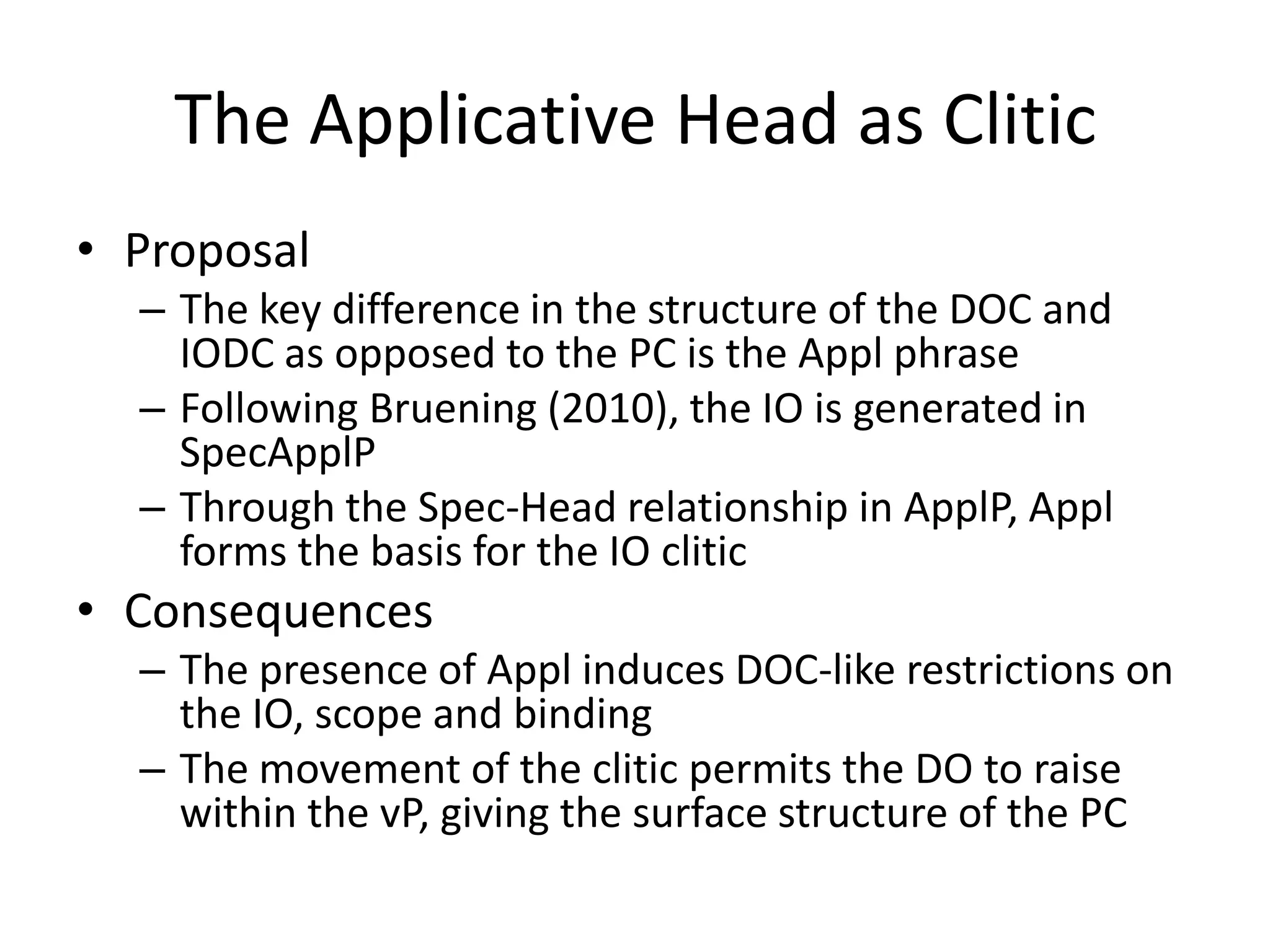
![Characteristics of the clitic
• Does not match determiner paradigm – typical of
dative clitics in Romance languages (le in Spanish, lui in
French, etc.)
• Agrees with IO in number and case, but not gender
– Franco (2001) and Anagnostopoulou (2006) for evidence
that [+animate] overrides [+gender]
• Encodes possession relationship between DO and IO
– Clitics in other contexts e.g. inalienable possession
Le lavaron los manos a Luis
CL wash-3pl the hands of Luis](https://image.slidesharecdn.com/woodsrebeccaiodcsppt-120918072102-phpapp01/75/Indirect-Object-Clitic-Doubling-Constructions-in-Spanish-and-the-role-of-the-Applicative-Head-10-2048.jpg)
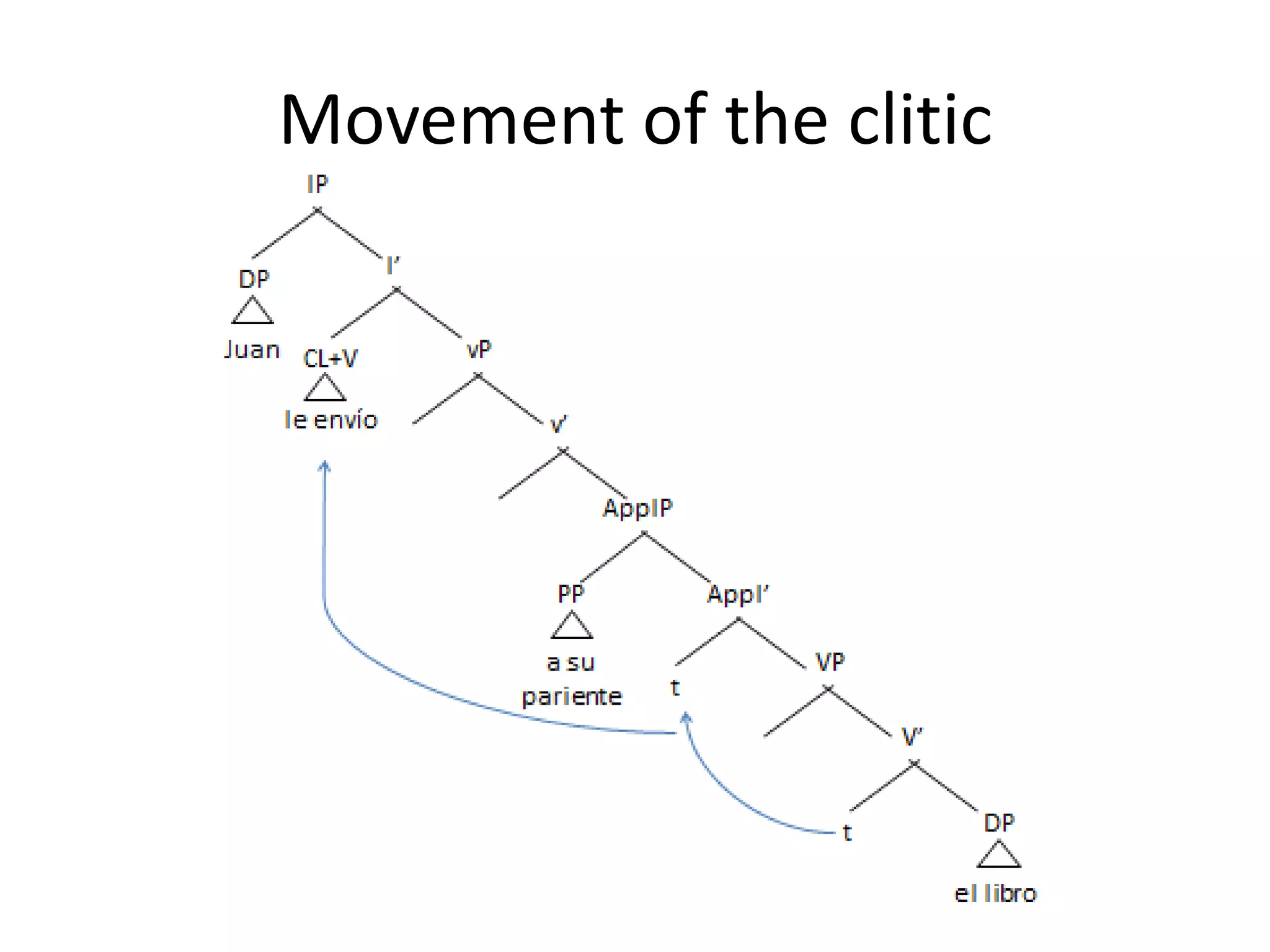
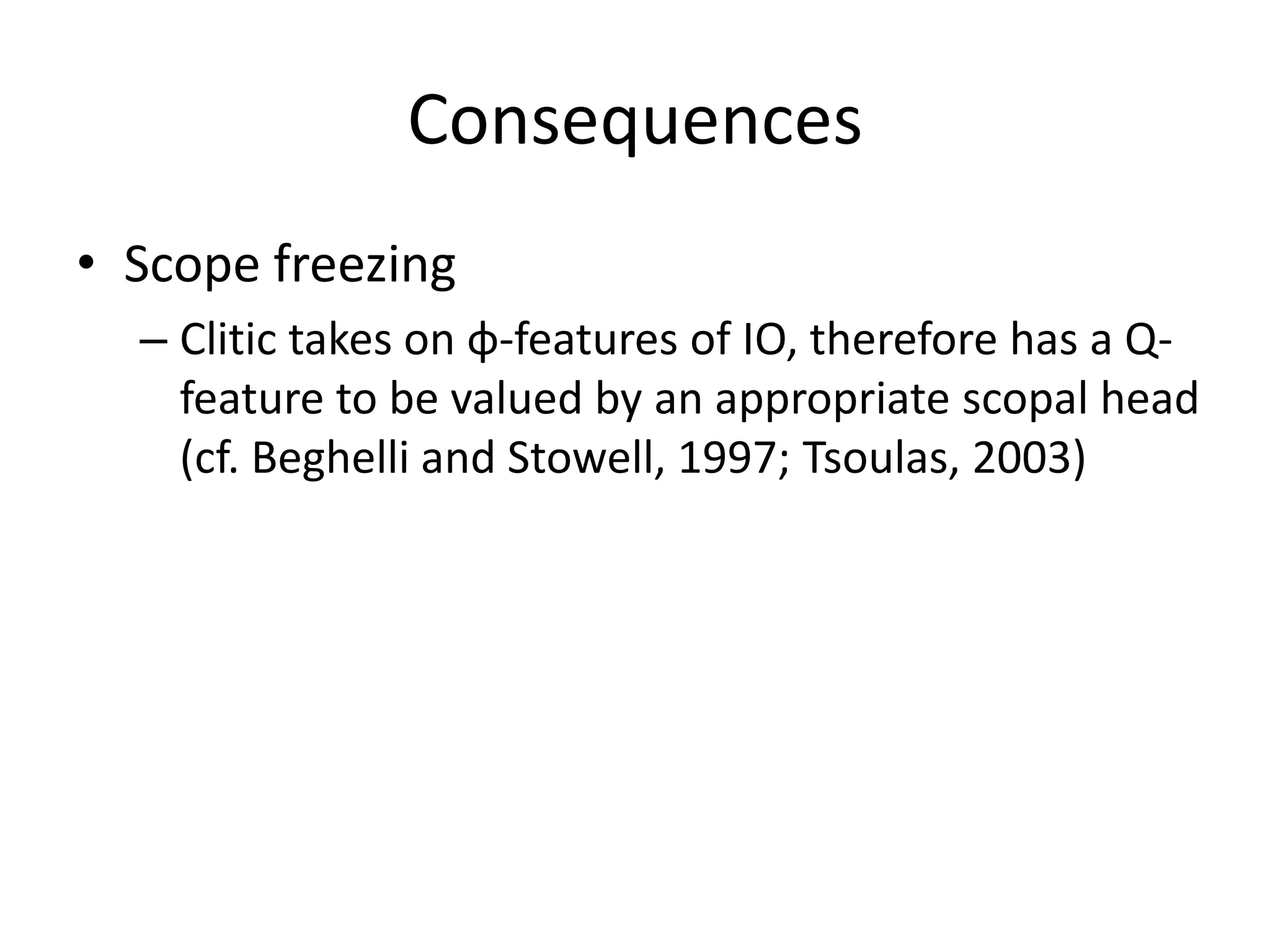
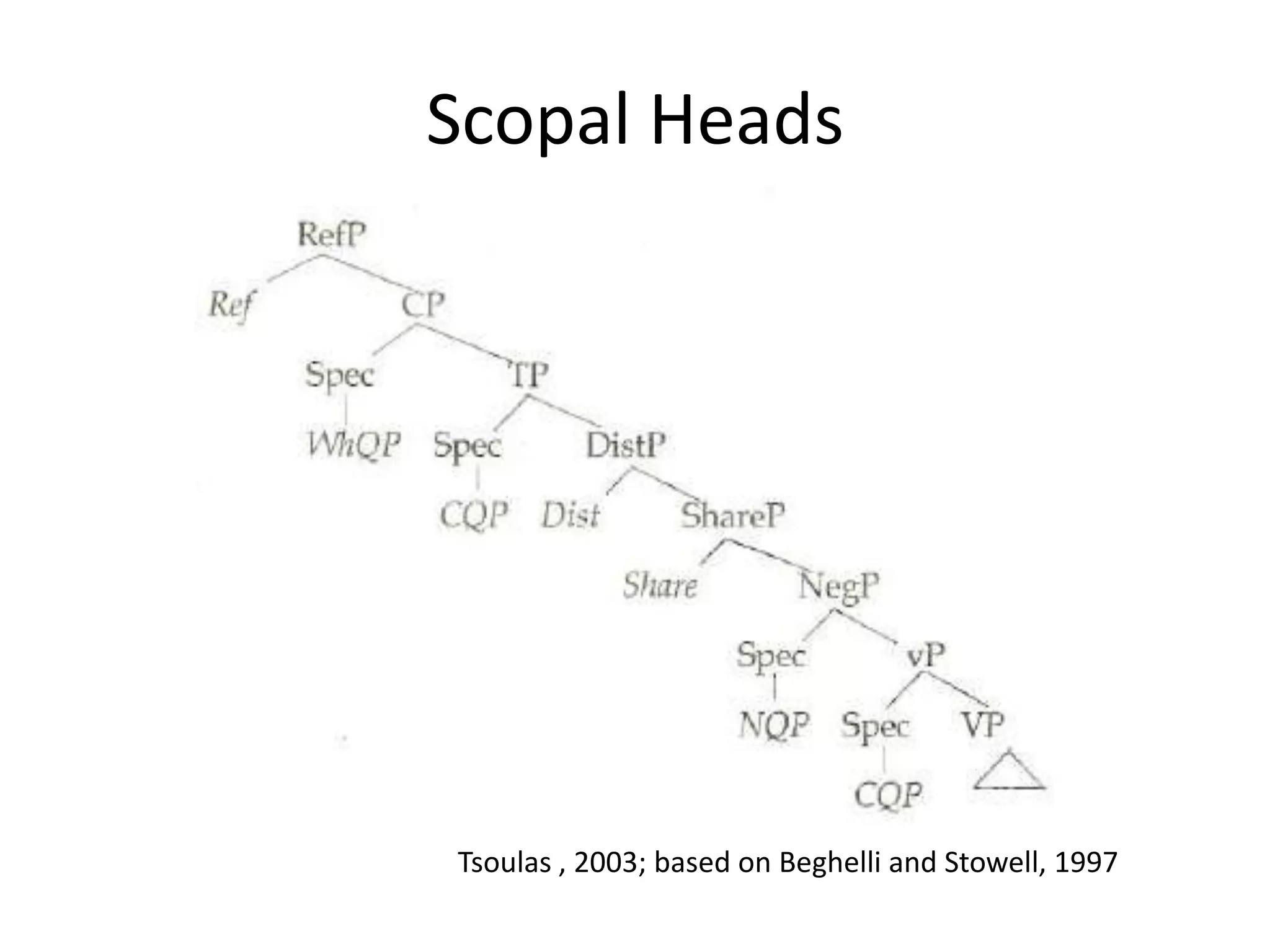
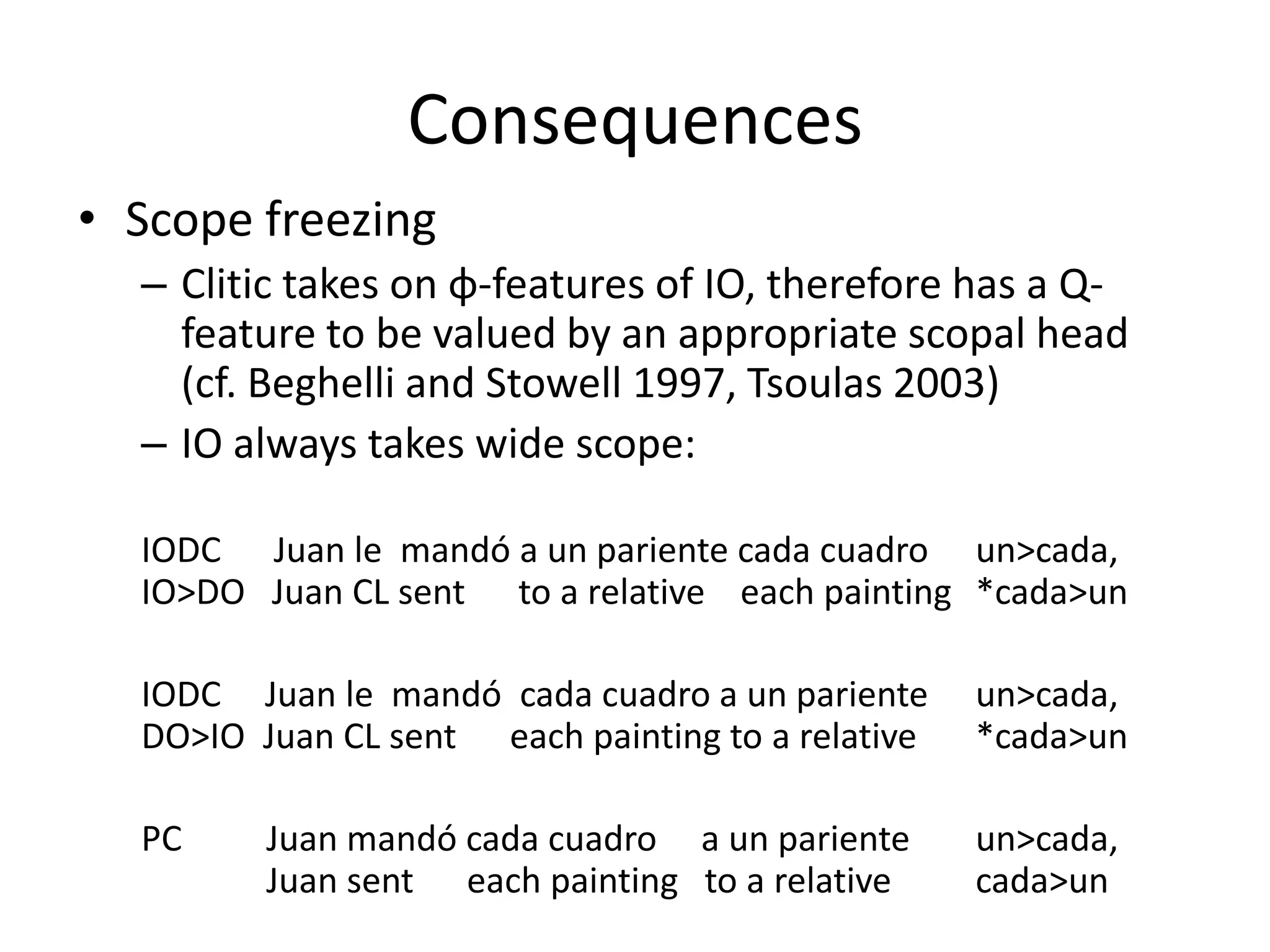
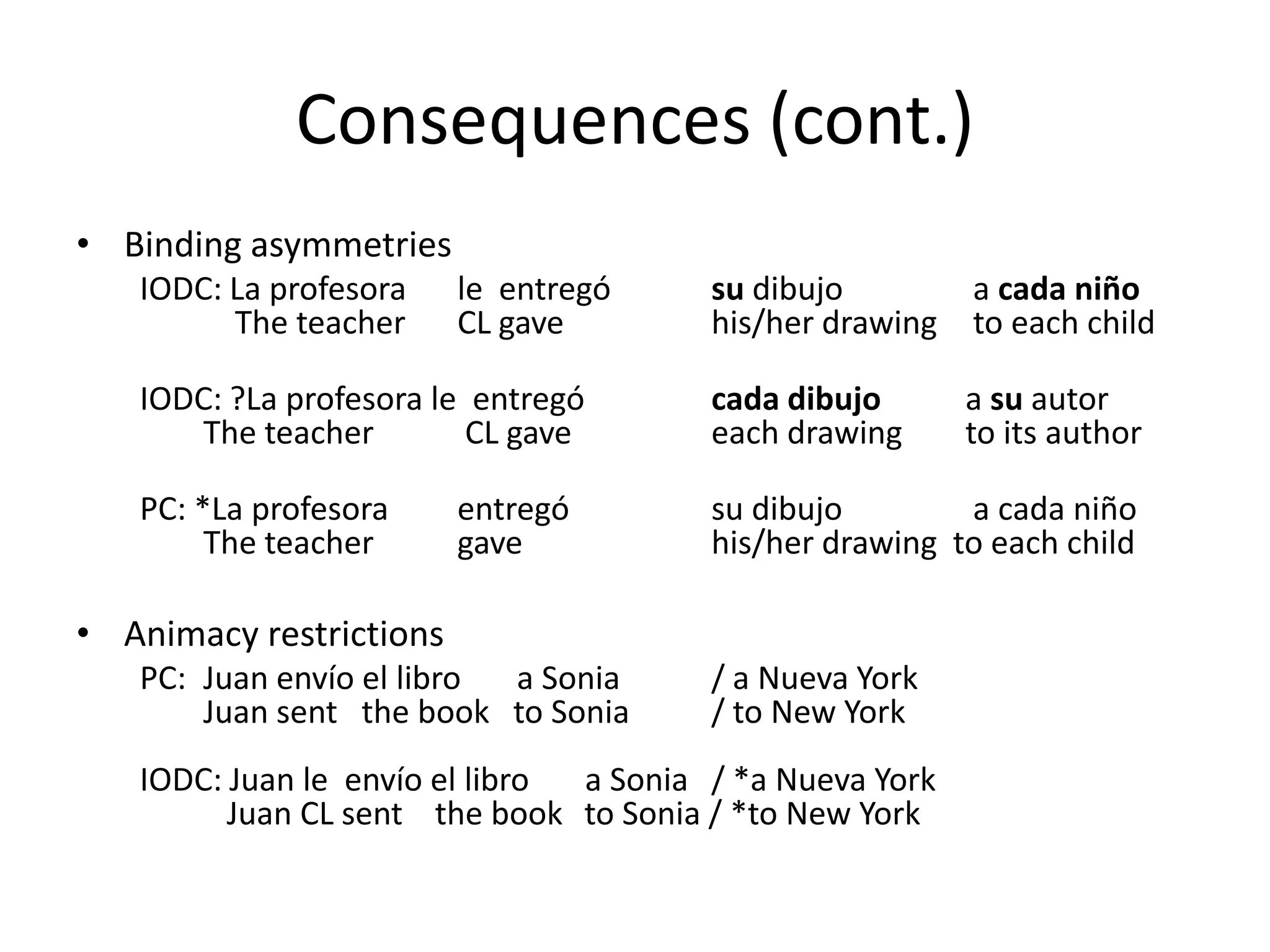
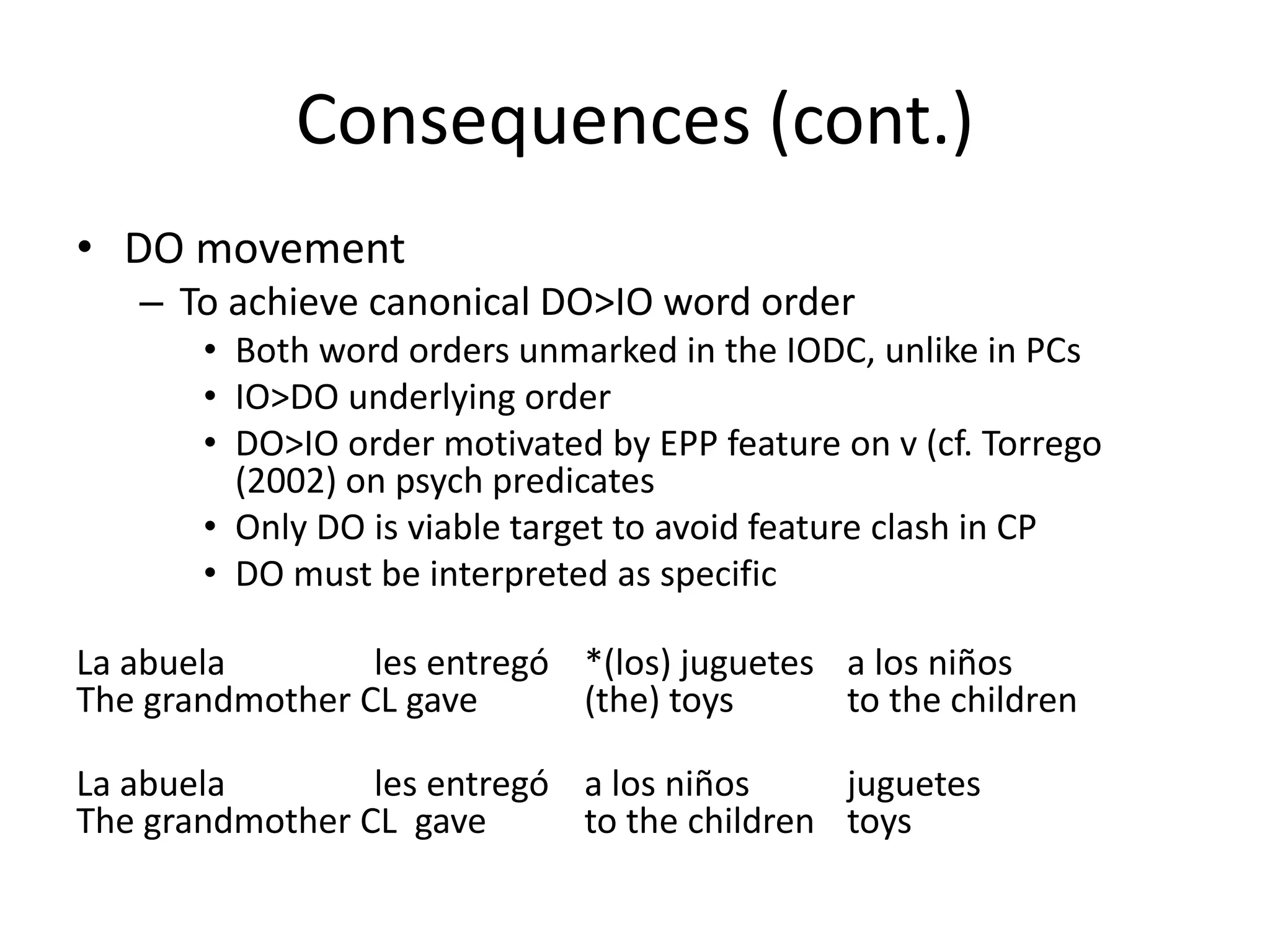
![Consequences (cont.)
• DO movement
– Passivisation and raising (cf. Anagnostopoulou 2003 on Greek)
• Movement of the clitic in T -> DO and IO equally close for
attraction by EPP in T
• IO features on clitic in same minimal domain as the target of
movement
• Passivisation and unaccusative constructions licit in IODCs
(though not normally licit in DOCs)
El premio Nobel (le) fue concedido a Cela el año pasado
The Nobel Prize CL was awarded to Cela last year
[A los alumnos] *(les) gusta el libro
To the student CL pleased the book
Examples from Anagnostopoulou (2003)](https://image.slidesharecdn.com/woodsrebeccaiodcsppt-120918072102-phpapp01/75/Indirect-Object-Clitic-Doubling-Constructions-in-Spanish-and-the-role-of-the-Applicative-Head-17-2048.jpg)
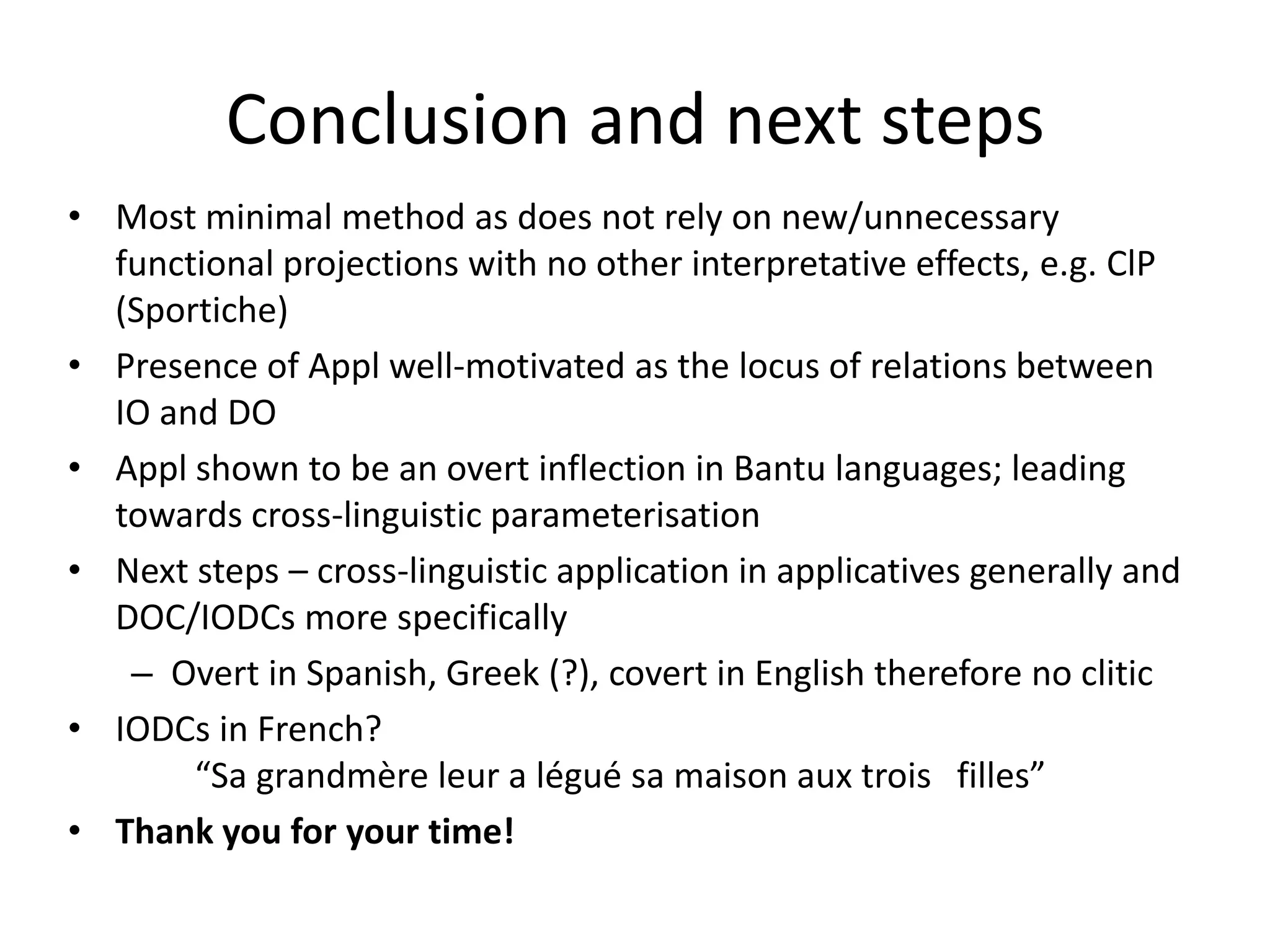
![References
• Anagnostopoulou, E. (2003). The syntax of ditransitives: evidence from clitics. Berlin: Mouton de Gruyter.
• Anagnostopoulou, E. (2006). Clitic doubling. In: M. Everaert and H. van Riemsdijk, eds. The Blackwell Companion to Syntax.
Malden, MA.: Blackwell, ch. 14.
• Beghelli, F. and Stowell, T. (1997). Distributivity and negation: the syntax of each and every. In: A. Szabolsci, ed. (1997). Ways
of scope taking. Dordrecht: Kluwer Academic Publishers. Ch. 3.
• Bruening, B. (2001). QR obeys superiority: frozen Scope and ACD. Linguistic Inquiry, 32(2), 233-273.
• Bruening, B. (2010). Ditransitive asymmetries and a theory of idiom formation. Linguistic Inquiry, 41(4), 519-562.
• Chomsky, N. (1995).The minimalist program. Cambridge, MA.: MIT Press.
• Chomsky, N. (2000). Minimalist inquiries: the framework. In: R. Martin, D. Michaels and J. Uriagereka, eds. Step by step:
Essays on Minimalist Syntax in honor of Howard Lasnik. Cambridge, MA.: MIT Press, pp.89-155.
• Cuervo, M-C. (2003). Structural asymmetries but same word order. In: A.M. Di Sciullo, ed. Asymmetry in Grammar, vol. 1.
Amsterdam: John Benjamins.
• Franco, J. (2001). On the doubling of overt operators. In: J. Gutiérrez-Rexach and L. Silva-Villar, eds. Current issues in Spanish
syntax and semantics. Berlin: Mouton de Gruyter, pp.85-106.
• Harley, H. (1997). If you have, then you can give. In: B. Agbayani and S.-W. Tang, eds. Proceedings of the 15th West Coast
Conference on Formal Linguistics. Stanford, CA.: CSLI. Available at:
http://dingo.sbs.arizona.edu/~hharley/PDFs/HarleyHaveGiveWCCFL1996.pdf [last accessed 27 March 2012]
• Harley, H. (2002). Possession and the double object construction. Linguistic Variation Yearbook, 2, 29-68. Available at:
http://dingo.sbs.arizona.edu/~hharley/PDFs/HarleyGive2002.pdf [last accessed 27 March 2012]
• Larson, R.K. (1988). On the double object construction. Linguistic Inquiry, 19(3), 335-391.
• Larson, R.K. (1990). Double objects revisited: Reply to Jackendoff. Linguistic Inquiry, 21(4), 589-632.
• Marantz, A. (1993). Implications of asymmetries in Double Object Constructions. In S.A. Mchombo, ed. Theoretical aspects
of Bantu grammar 1.Stanford, CA.: CSLI Publications, pp.113-151.
• Pesetsky, D. (1995). Zero syntax. Cambridge, MA.: MIT Press.
• Pylkkänen, L. (2002). Introducing arguments. Doctoral dissertation, Massachusetts Institute of Technology.
• Pylkkänen, L. (2008). Introducing arguments. Cambridge, MA.: MIT Press.
• Torrego E. (2002). Arguments for a derivational approach to syntactic relations based on clitics. In: S.D. Epstein and T.D.
Seely, eds. Derivation and explanation in the minimalist program. Cambridge: CUP, Ch. 10.
• Tsoulas, G. (2003). Floating quantifiers as overt scope markers. Korean Journal of English Language and Linguistics, 3(2), 157-
180](https://image.slidesharecdn.com/woodsrebeccaiodcsppt-120918072102-phpapp01/75/Indirect-Object-Clitic-Doubling-Constructions-in-Spanish-and-the-role-of-the-Applicative-Head-19-2048.jpg)